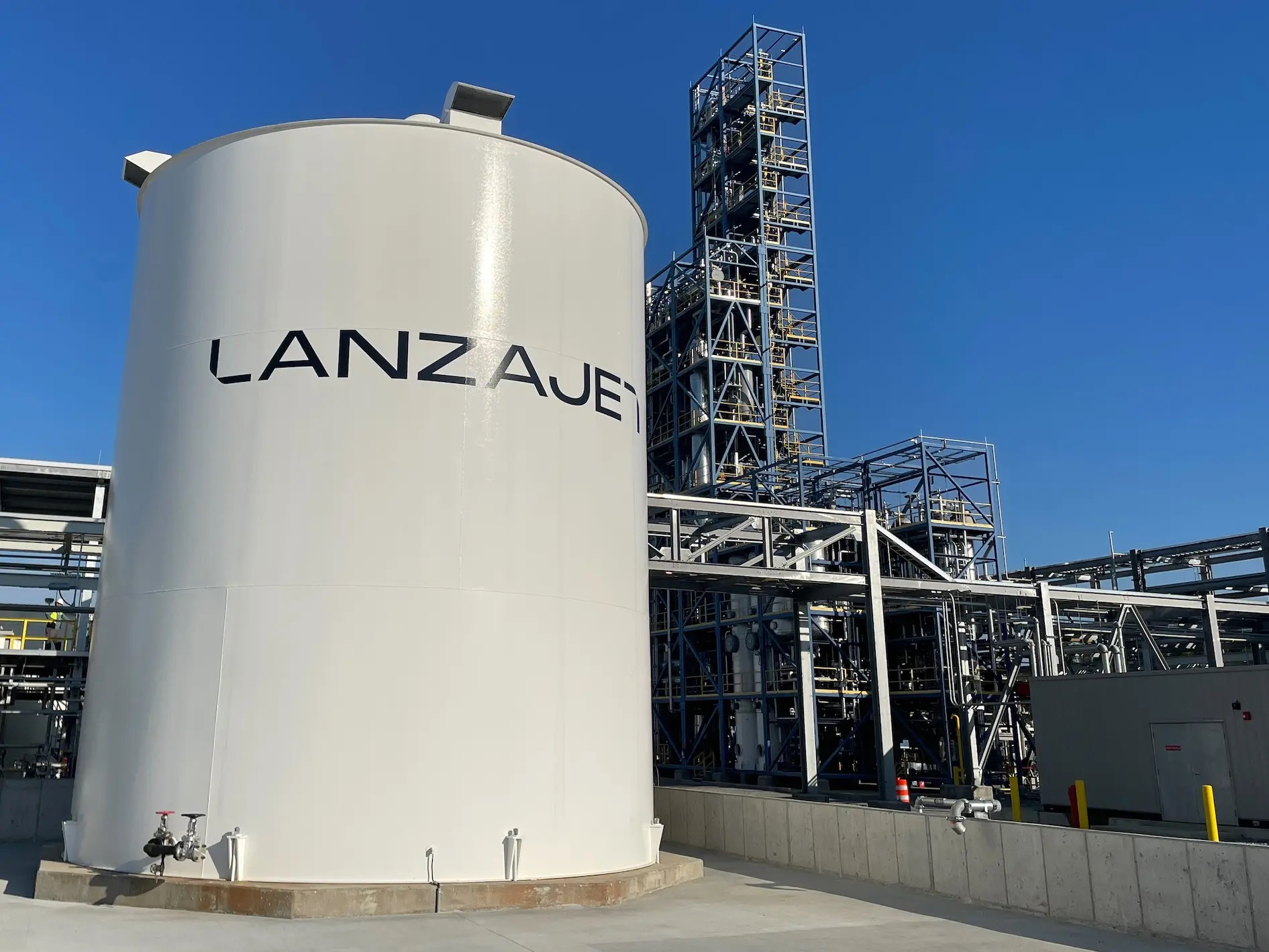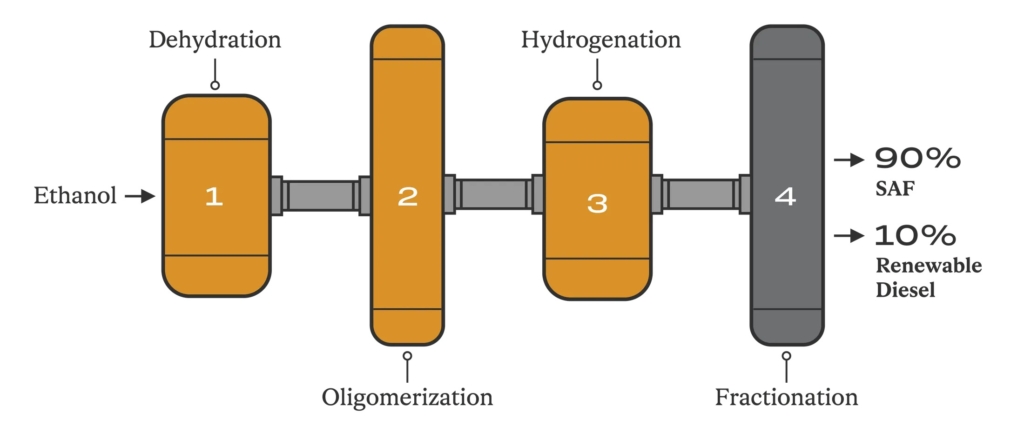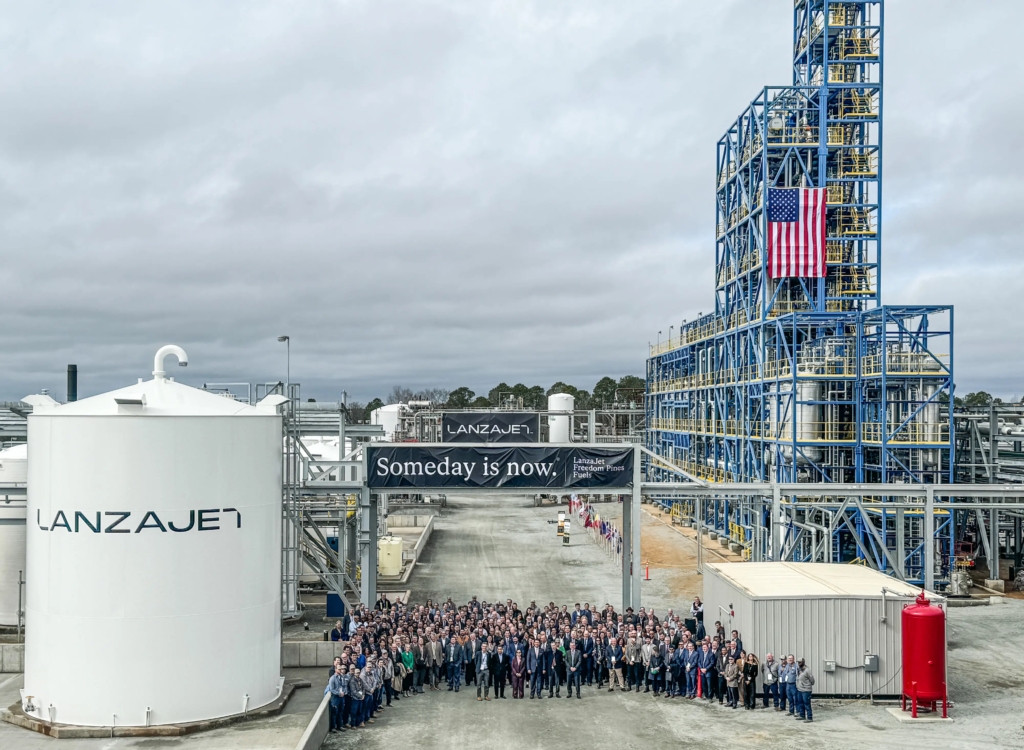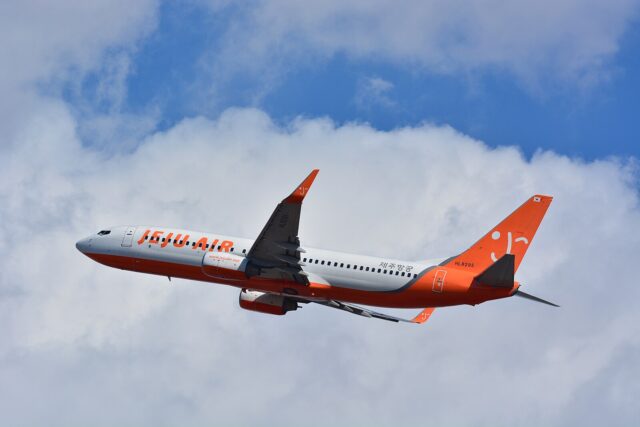World first: LanzaJet brings ethanol-to-jet sustainable aviation fuel to commercial scale

November 13, 2025

LanzaJet has achieved a global first, confirming that its Freedom Pines Fuels plant in Soperton, Georgia, is now fully operational and producing on-spec jet fuel from ethanol at a commercial scale.
This marks the first time that alcohol-to-jet (ATJ) fuel has been manufactured in a commercial-scale facility anywhere in the world, and the first time a non-oil-based sustainable aviation fuel pathway beyond HEFA (hydroprocessed esters and fatty acids) has reached this level of maturity.
The plant integrates several first-of-a-kind technologies, including LanzaJet’s proprietary ethanol-to-jet process, Technip Energies’ Hummingbird ethanol to ethylene unit, and an oligomerisation system developed jointly by the US Department of Energy and LanzaTech. LanzaJet brings these systems together into a continuous, end-to-end operation that produces fully certified jet fuel ready for blending.

The project represents over $300 million of investment and employment of more than 300 workers during construction. Around 65 direct and indirect roles remain in ongoing operations.
Company Chief Executive Jimmy Samartzis called the milestone “a major win for global aviation” and a demonstration of what is possible when research, engineering, and commercial deployment align. LanzaJet says the facility now serves as the template for future ATJ projects around the world.
Read also: Which European airlines use the most sustainable aviation fuel?
How ethanol-to-jet unlocks new feedstocks beyond HEFA for SAF
This development addresses one of the central challenges facing the aviation sector. Almost all current SAF production is based on HEFA, and multiple expert bodies have warned that HEFA feedstocks are approaching their limit. Used cooking oil, animal fats, and related bio-oils cannot meet long-term demand, even with aggressive expansion.
ATJ directly broadens the supply base. Ethanol is produced at an industrial scale in multiple regions, and can also be derived from waste biomass, agricultural residues, municipal solid waste, and captured carbon. This allows countries with established ethanol industries to build domestic SAF capacity rather than rely on imports, reducing exposure to the feedstock constraints that have shaped the SAF market to date.

Freedom Pines demonstrates that a non-HEFA SAF pathway can operate reliably at a commercial scale, providing a reference design for other nations and investors. For airlines, it confirms that one of the most discussed next-generation SAF technologies can now deliver real volumes.
The timing is critical. With SAF mandates tightening in the EU, UK, and US, regulators have been clear that new pathways must reach commercial readiness before 2030 if long-term targets are to be met. Until now, few technologies had crossed that threshold.
What LanzaJet’s breakthrough means for future SAF production
LanzaJet intends to license and deploy its ATJ technology globally. The company is already working with partners in the US, UK, Japan, Australia, India, the EU, the Middle East, and South America. Freedom Pines is expected to serve as the model for future facilities, giving investors and governments a proven baseline for performance and integration.
The next phase will focus on replication at larger scales, cost reduction as plants mature, and securing long-term ethanol supply agreements, especially from waste and residue sources. The aviation sector will be watching closely to see whether ATJ plants can be brought online more quickly and reliably than other next-generation SAF projects, including Power to Liquid.
If successful, ATJ could become the first major post-HEFA pathway to deliver meaningful volumes of SAF before the end of the decade, easing supply pressure and helping airlines meet rising blend requirements. In a market defined by uncertainty, LanzaJet has now provided one of the clearest signs that the next wave of SAF production is finally beginning to materialise.
















